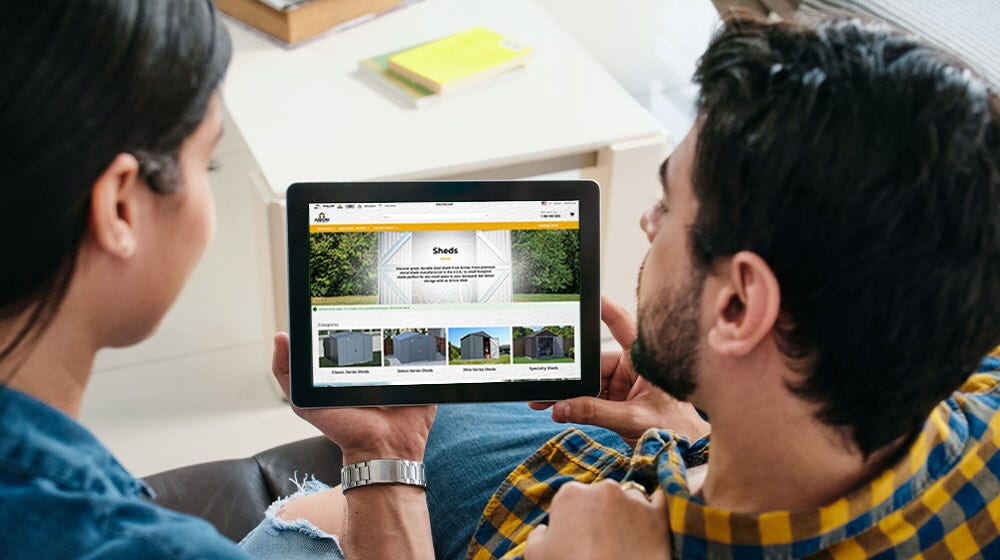With so many options available, choosing the right storage shed for your outdoor space might seem overwhelming. Lucky for you, we’re here to help! All you have to do is consider the following four key elements:
1. Size
You might assume bigger is better, especially if you intend to store lots of bulky equipment. But you need to keep in mind the size of the lot where you’ll be placing your shed. Yes, a 10’ x 12’ shed will be large enough to store your ATV, but if your backyard is small, you won’t have much area left for gardening, hosting barbecues, or playing with the kids.
2. Space
In addition to the size of your outdoor area, consider the type of space where you’ll be placing your shed. If your property is narrow, a lean-to shed that you can place flush against your house or fence could free up more usable backyard area. Your property’s terrain will also influence your options. You need a fairly even foundation on which to set a shed, so if your backyard is hilly, its overall size is less important than the size of any flat portions within it. Similarly, you should never place an outdoor storage shed in an area with poor drainage. And unless you’re opting for a lean-to shed, be certain to leave enough clearance between your shed and any other structures—not just your house but also a jungle gym, a swimming pool, or a playhouse.
3. Budget
Choosing the cheapest available shed can be a false economy, as it might not stand up to the elements over time, requiring you to buy a replacement. Instead, think of your shed as a long-term investment, especially because a durable, attractive backyard shed can actually boost the value of your property.
And while some companies might encourage you to buy the most expensive shed you can afford, we’re going to remind you to factor in two other potential expenses before you make your purchase: flooring and assembly. Some sheds come with a built-in floor; others don’t. While you might be okay with storing some items directly on the ground, a floor offers extra protection from moisture and mildew. If you opt to add flooring, price it out and add that expense to your shed budget. If you’re going to hire a professional to install the shed for you, factor that into your budget as well. (Should you decide to DIY, check out our how-to videos.)
4. HOA Rules
Homeowner associations often have regulations regarding a backyard shed’s footprint, height, positioning, and appearance. Be sure you clear your plans with your HOA before you make any purchases.
Once you take these factors into consideration, selecting your ideal storage shed will be a snap. And since our website allows you to search or sort outdoor sheds by price, that makes the process easier still!



